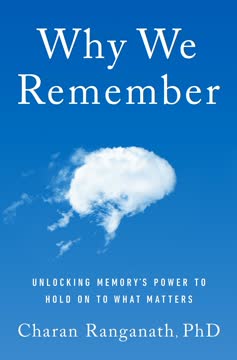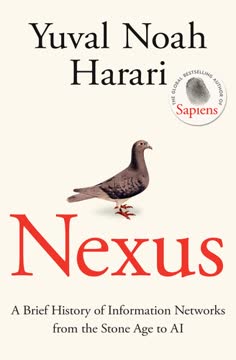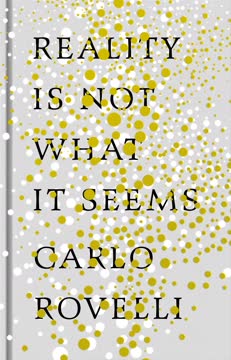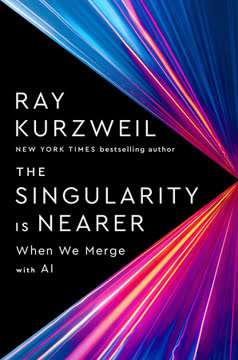Key Takeaways
1. Embrace change and uncertainty to thrive in life
"Clinging to the past is the problem. Embracing change is the answer."
Change is inevitable. Accepting and adapting to change is crucial for personal growth and success. Resistance to change often leads to stagnation and missed opportunities. Instead, view change as a chance for growth and new experiences.
Uncertainty is a constant. Rather than fearing the unknown, learn to become comfortable with uncertainty. Develop strategies to manage anxiety and worry associated with uncertain situations. This might include:
- Practicing mindfulness and relaxation techniques
- Reframing uncertain situations as opportunities for learning
- Developing contingency plans for various scenarios
By embracing change and uncertainty, you position yourself to be more resilient and better equipped to handle life's challenges.
2. Develop mental agility to navigate complex situations
"Mental agility is not about changing for the sake of it, but rather, changing in harmony with your circumstances."
Cognitive flexibility is key. Mental agility involves the ability to switch between different thoughts, tasks, and strategies smoothly. This skill allows you to adapt to new situations quickly and find creative solutions to problems.
To improve your mental agility:
- Practice task-switching exercises
- Expose yourself to new experiences and ideas
- Challenge your assumptions and preconceptions
- Learn to look at problems from multiple perspectives
Developing mental agility helps you become more adaptable and better equipped to handle the complexities of modern life. It enables you to make better decisions and respond more effectively to changing circumstances.
3. Cultivate self-awareness to enhance decision-making
"Knowing yourself is the beginning of all wisdom."
Understand your personality. Self-awareness involves recognizing your personality traits, values, beliefs, and biases. This knowledge helps you make decisions that align with your true self and improve your overall well-being.
To enhance self-awareness:
- Reflect on your experiences and reactions
- Seek feedback from others
- Keep a journal to track your thoughts and emotions
- Take personality assessments and reflect on the results
By developing a deeper understanding of yourself, you can make more informed decisions and navigate life's challenges with greater confidence and authenticity.
4. Understand and regulate emotions for better adaptability
"Emotions are the gears linking thoughts and judgments to actions."
Emotions are valuable signals. Recognizing and understanding your emotions provides important information about your environment and internal state. Learning to regulate your emotions allows you to respond more effectively to different situations.
To improve emotional awareness and regulation:
- Practice identifying and labeling your emotions
- Develop strategies for managing strong emotions (e.g., deep breathing, reframing)
- Cultivate positive emotions through gratitude and mindfulness practices
- Learn to express emotions in healthy ways
By mastering your emotional responses, you can enhance your ability to adapt to changing circumstances and maintain better relationships with others.
5. Harness intuition and situational awareness
"Intuition is fine-tuned by the diversity of different contexts that we have been exposed to."
Trust your gut feelings. Intuition is a powerful tool that draws on your accumulated experiences and knowledge. By learning to tap into your intuition, you can make faster and often better decisions, especially in complex or ambiguous situations.
To develop your intuition and situational awareness:
- Pay attention to subtle cues in your environment
- Reflect on past experiences and outcomes
- Expose yourself to diverse situations and perspectives
- Practice mindfulness to heighten your awareness of the present moment
Honing your intuition and situational awareness allows you to navigate uncertain situations with greater confidence and effectiveness.
6. Balance persistence with flexibility for optimal results
"Finding the perfect balance between grit and agility is key to success in life."
Grit and flexibility are complementary. While persistence is important for achieving long-term goals, flexibility allows you to adapt your approach when circumstances change. Striking the right balance between these two qualities is crucial for success.
To balance persistence and flexibility:
- Set clear goals but be open to adjusting your approach
- Regularly reassess your strategies and be willing to pivot when necessary
- Cultivate resilience to bounce back from setbacks
- Practice cognitive reframing to see obstacles as opportunities
By combining persistence with flexibility, you can pursue your goals with determination while remaining adaptable to changing circumstances.
7. Practice switch craft to supercharge your agility
"Switch craft is a supercharged agility that allows us to thrive in a precarious world where many moving pieces come at us from unexpected directions."
Master the art of switch craft. Switch craft involves skillfully navigating complex situations by combining mental agility, self-awareness, emotional intelligence, and intuition. It enables you to choose the right strategy for each unique situation.
To develop switch craft:
- Cultivate all four pillars: mental agility, self-awareness, emotional awareness, and intuition
- Practice making quick decisions in various contexts
- Seek out diverse experiences to broaden your perspective
- Reflect on your successes and failures to refine your approach
By mastering switch craft, you can enhance your ability to thrive in an increasingly complex and uncertain world, making better decisions and adapting more effectively to change.
Last updated:
FAQ
What is Switch Craft: Harnessing the Power of Mental Agility to Transform Your Life by Elaine Fox about?
- Core theme: The book explores how mental agility enables individuals to adapt, thrive, and transform their lives amid constant change and uncertainty.
- Four pillars framework: Elaine Fox introduces four pillars—Mental Agility, Self-Awareness, Emotional Awareness, and Situational Awareness—as the foundation for resilience and well-being.
- Practical and scientific: Drawing on decades of psychological and neuroscientific research, Fox provides actionable strategies and exercises to help readers develop an agile mindset.
- Purpose: The book aims to empower readers to navigate life’s complexities by understanding themselves, their emotions, and their environment more deeply.
Why should I read Switch Craft by Elaine Fox?
- Manage uncertainty: The book addresses the universal challenge of coping with change and uncertainty, which is crucial for success and happiness in today’s unpredictable world.
- Evidence-based strategies: Fox combines cutting-edge research with practical exercises, offering tools to improve mental flexibility, emotional regulation, and resilience.
- Personal transformation: Readers learn to become active stewards of their well-being, overcoming anxiety, worry, and rigidity, and embracing change as an opportunity.
- Real-life stories: The book includes relatable examples and stories to illustrate how mental agility can be applied in everyday life.
What are the key takeaways from Switch Craft by Elaine Fox?
- Mental agility is essential: Flexibility in thoughts, emotions, and actions is vital for navigating complex and changing environments.
- Four pillars for resilience: Agility, self-awareness, emotional awareness, and situational awareness work together to build psychological strength.
- Balance grit and flexibility: Success comes from knowing when to persist and when to adapt or switch strategies.
- Practical exercises matter: Regularly practicing the book’s suggested exercises can significantly improve adaptability and well-being.
What are the four pillars of switch craft in Elaine Fox’s Switch Craft?
- Mental Agility: The ability to flex thoughts, feelings, and actions to adapt to changing circumstances, including adaptability, balancing life, changing perspective, and developing mental competence.
- Self-Awareness: Deep understanding of one’s personality, values, and bodily signals (interoception) to guide agile responses.
- Emotional Awareness: Recognizing, accepting, and regulating emotions to prevent them from controlling behavior and to align actions with values.
- Situational Awareness: Combining internal awareness with intuition and understanding of the external context to make informed decisions.
How does Elaine Fox define and explain mental agility in Switch Craft?
- Definition: Mental agility is the capacity to be flexible and nimble in thinking, feeling, and acting, enabling effective navigation of complex and changing environments.
- ABCD of agility: It involves Adaptability, Balancing competing goals, Changing perspectives, and Developing mental competence (executive functions like inhibitory control and cognitive flexibility).
- Brain’s role: Agile brains have dynamic neural networks, especially in the frontal cortex, supporting the ability to switch tasks and suppress irrelevant thoughts.
- Benefits: Mental agility helps escape rigid mindsets, improves decision-making, and supports resilience by knowing when to stick with a plan or switch strategies.
What practical exercises does Elaine Fox recommend in Switch Craft to improve mental agility?
- Task switching: Practice switching between different mental tasks (e.g., sorting cards by different rules or alternating between digit tasks) to train cognitive flexibility.
- Time management: Focus on two or three specific tasks per day, allocate realistic time slots, and include breaks to reduce energy drain from multitasking.
- Perspective shifting: Challenge habitual interpretations by considering alternative explanations and imagining how admired people would solve your problems.
- Reading fiction: Engaging with stories helps broaden perspective and enhances mental flexibility.
How does Switch Craft by Elaine Fox describe self-awareness and its importance?
- Know thyself: Self-awareness involves understanding your personality traits, core beliefs, values, and bodily sensations (interoception) to respond agilely to life’s challenges.
- Personality traits: The Big Five traits (Openness, Conscientiousness, Extraversion, Agreeableness, Neuroticism) provide a framework for understanding consistent patterns in behavior.
- Interoception: Awareness of internal bodily signals like heartbeat and muscle tension influences emotions and decision-making, and can be enhanced through mindfulness.
- Authentic living: Self-awareness combats mental rigidity and promotes choices aligned with your true self.
What role do beliefs and values play in self-awareness according to Switch Craft by Elaine Fox?
- Core beliefs: Deep-seated convictions about oneself and the world, often unconscious, shape thoughts, feelings, and behaviors, and can be positive or self-sabotaging.
- Values as anchors: Values are guiding principles that provide meaning and direction, remaining relatively stable even as circumstances change.
- Challenge and uncover: The book encourages questioning core beliefs and clarifying values to ensure authentic living.
- Alignment: Living according to your core values supports psychological health and agile adaptation to change.
What practical exercises does Elaine Fox suggest in Switch Craft for uncovering your true self?
- Personal narratives: Write stories about key life events—low points, high points, turning points, and self-defining memories—to reveal your authentic self and core values.
- Interpretation: Analyze these narratives for emotional quality, complexity, and meaning-making to gain insights into your personality and growth.
- Honest reflection: Be truthful in your writing to access your inner self, rather than writing what you think others want to hear.
- Ongoing process: Regular reflection helps deepen self-awareness and personal development.
How does Elaine Fox describe emotional awareness and its importance in Switch Craft?
- Emotions as tools: Emotions act as a “gearbox” linking thoughts and actions, allowing for flexible responses rather than fixed reflexes.
- Constructed emotions: Emotions are constructed from brain, body, and context interactions, meaning they can be influenced and regulated.
- Positive and negative roles: Both positive and negative emotions are essential; negative emotions focus attention on threats, while positive emotions broaden thinking and build resilience.
- Emotional awareness: Recognizing and regulating emotions is crucial for mental agility and effective adaptation.
What emotion regulation strategies does Elaine Fox recommend in Switch Craft?
- DBT and wise mind: Use Dialectical Behavioral Therapy’s concept of integrating emotional and rational minds to act from a “wise mind” aligned with values.
- Four regulation types: Change the situation, shift attention, reinterpret the situation, and adjust responses (e.g., deep breathing, exercise).
- Reframing and distancing: Techniques like reframing beliefs, changing “why” questions to “how” questions, and distancing from unhelpful thoughts help reduce rumination.
- Expressive writing: Writing about emotions and experiences can help process and regulate difficult feelings.
How does Elaine Fox define intuition and situational awareness in Switch Craft, and how can they be improved?
- Intuition defined: Intuition is rapid, unconscious processing of environmental cues and past experiences, providing a “gut feeling” before conscious awareness.
- Experience-based: Intuition is built from tacit knowledge and diverse life experiences, enabling quick pattern recognition in complex situations.
- Situational awareness: Involves context sensitivity and the ability to pick up subtle environmental cues, guiding better decisions when rational analysis is limited.
- Improvement strategies: Broaden experiences, observe norms and anomalies, and practice focused attention to enhance situational awareness and reduce biases.
Review Summary
Switch Craft received mostly positive reviews, with readers praising its insights on mental agility and practical advice for navigating life's challenges. Many found the anecdotes engaging and the scientific explanations accessible. Some reviewers noted redundancy in certain sections and felt the book could have been more concise. Critics appreciated the author's integration of psychology theories and research for a general audience. Overall, readers found the book helpful in developing flexibility, self-awareness, and decision-making skills in an ever-changing world.
Similar Books










Download PDF
Download EPUB
.epub digital book format is ideal for reading ebooks on phones, tablets, and e-readers.




